Bad Environmentalist?
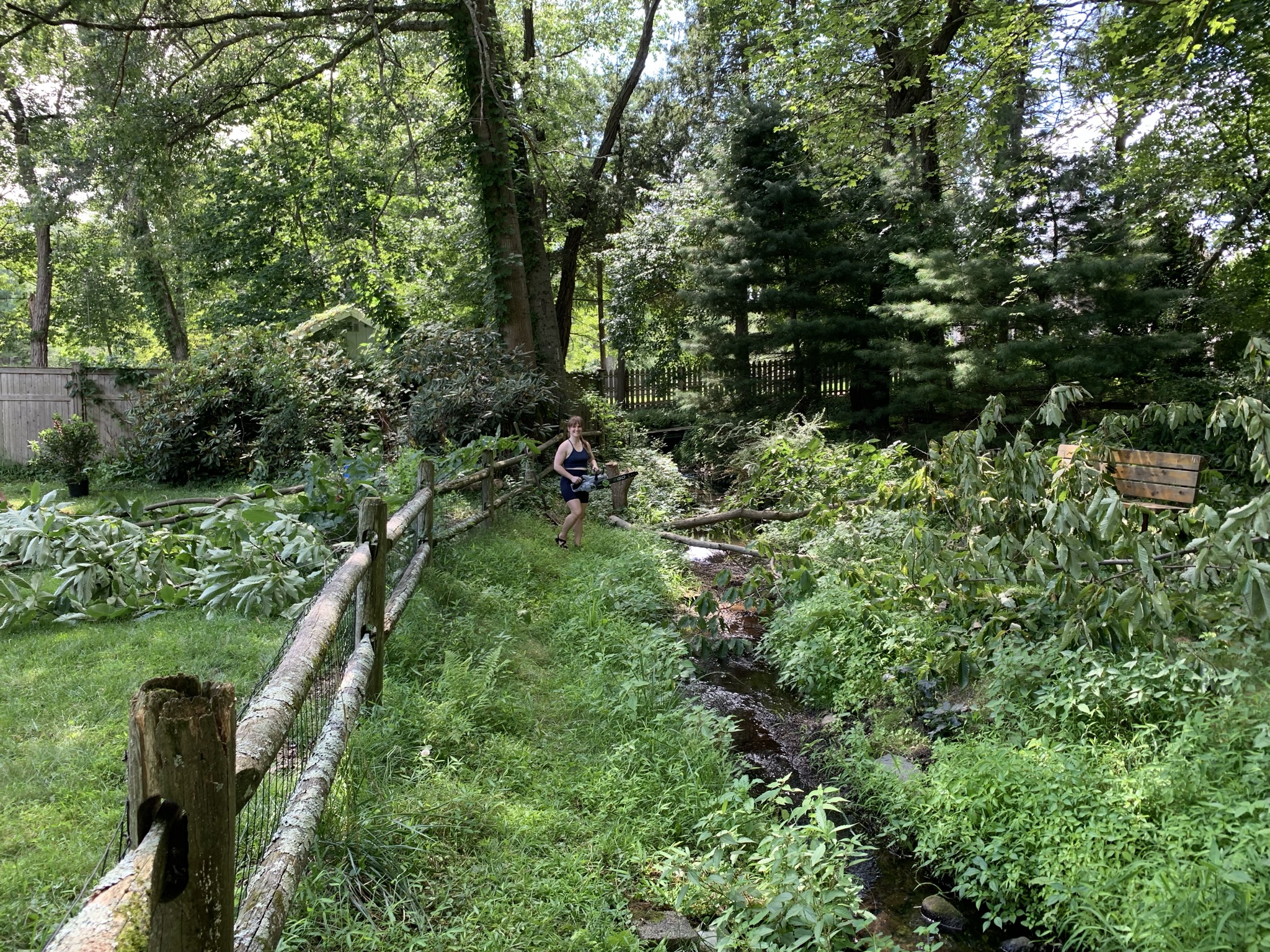
Last weekend, I did something I thought I never would.
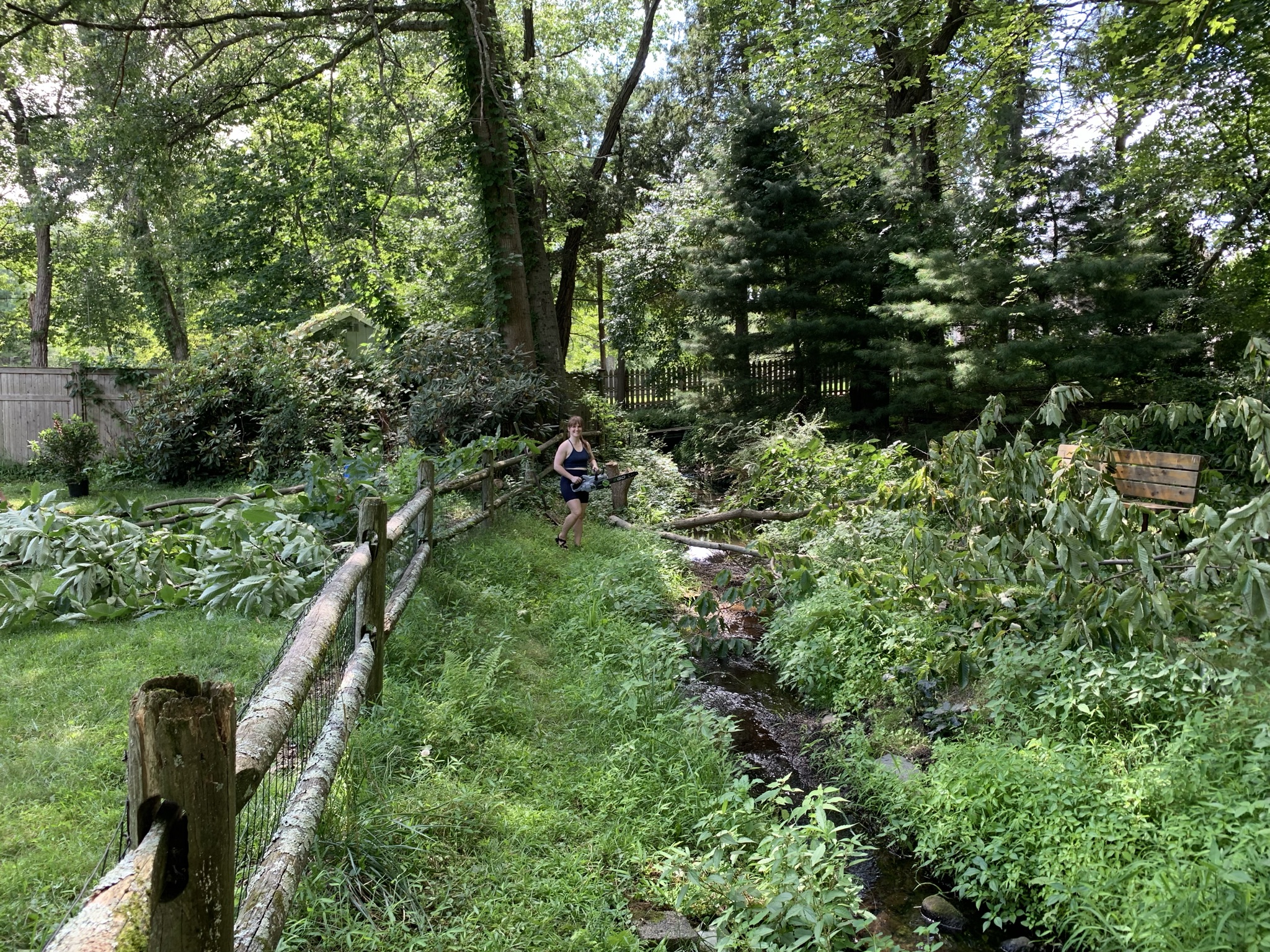
I cut down a tree. What kind of environmentalist am I?! Have I been living a lie?
Old me surely would have thought so. Last year, however, I stumbled upon Doug Tallamy’s latest book, Nature’s Best Hope.
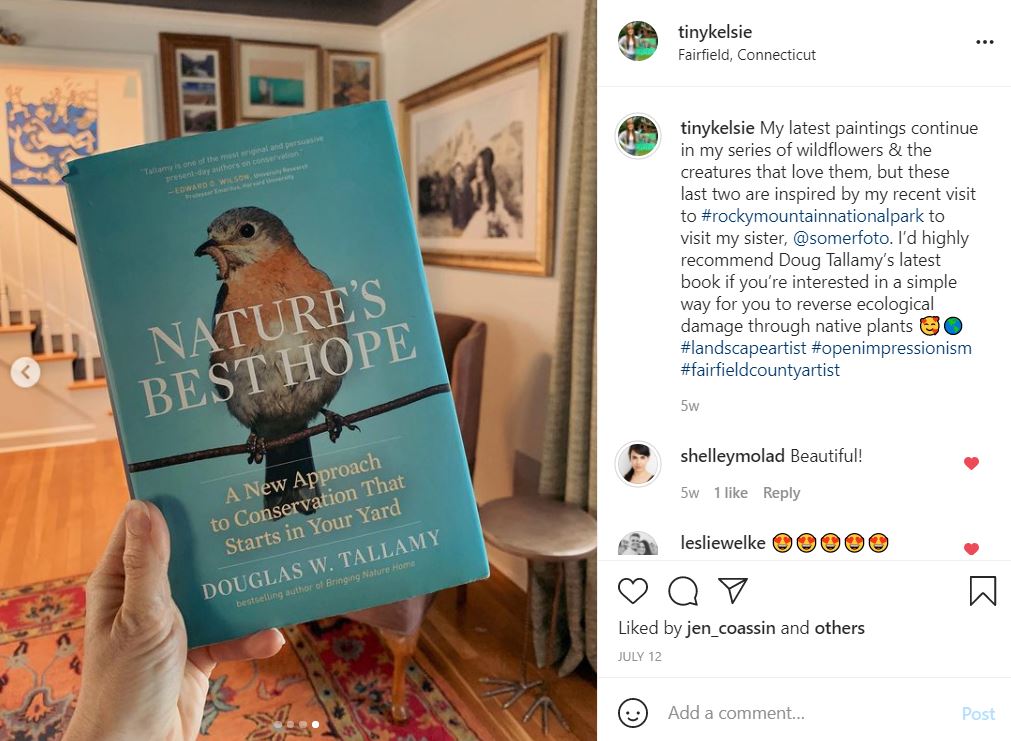
This book had me all like:

the entirety of my read.
Hear me out, this isn’t the environmental talk you expect
Don’t click over to find your various mind-numbing internet aggregate of choice just yet. I’ll try not to bore ya to tears while talking about the environment. First thing first–this book isn’t 225 pages of more of the guilt tripping, anxiety breeding version of environmental discussion we’ve been force fed since The Inconvenient Truth was presented to the masses in 2006. It’s not all that “If you used less of the plastic that the products you need ONLY come in, this wouldn’t be such a problem” nonsense that corporations spew so they won’t have to take responsibility for being amongst the 100 companies that create 71% of global emissions. It’s not telling you to stop doing something convenient without feeling any reward or seeing a needle move in a single direction.
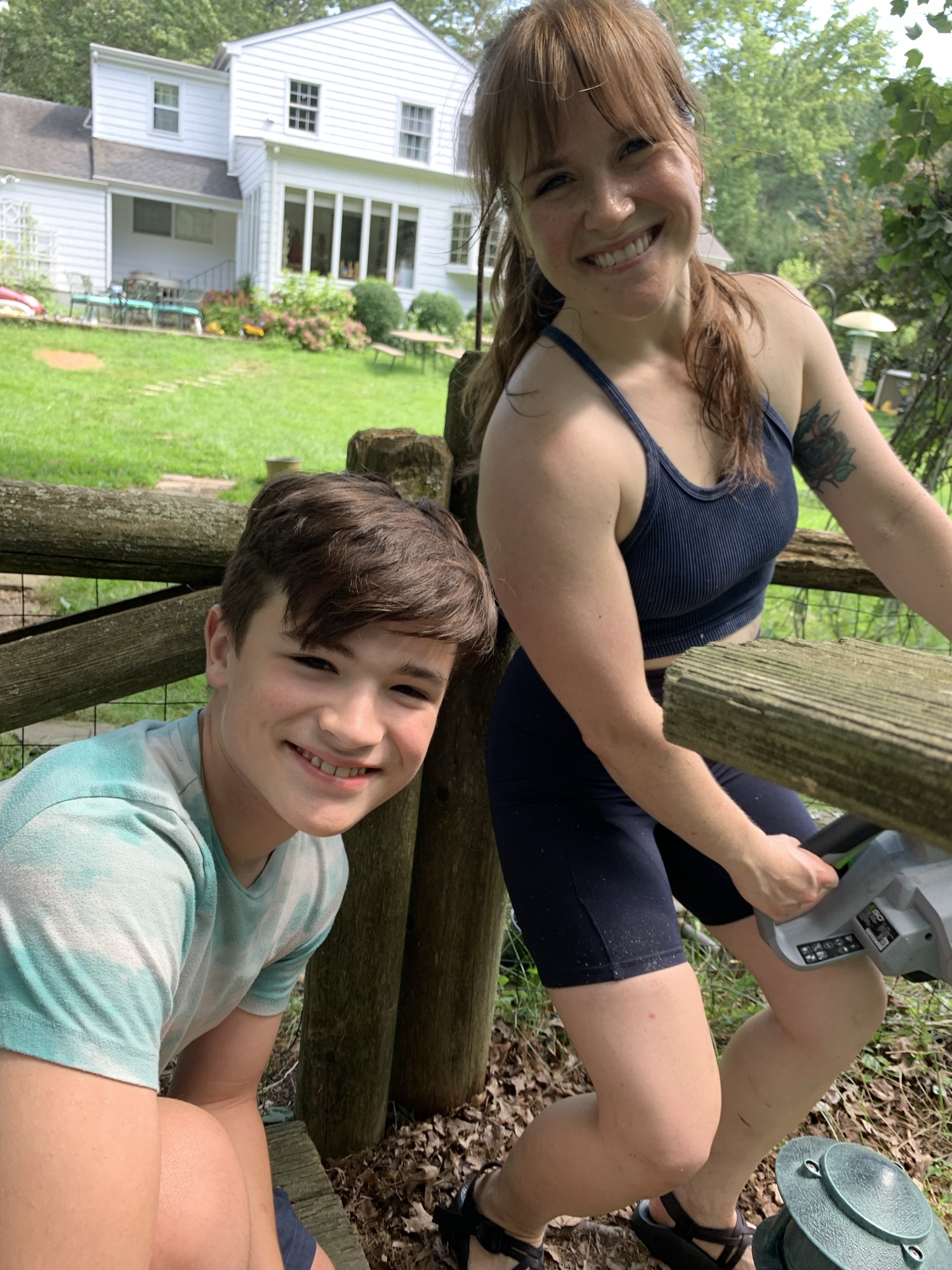
Make a notable impact on the environment, and see the fruits of your labor quickly
This isn’t clickbait! This is gardening. But before you rush over to Home Depot and scour their gardening section, there’s more intention involved.
Home Depot, Lowes, Walmart–those big box stores do sell plants. Beautiful ones that your neighbors have that bloom for a show-stopping season. However, what I’ve learned, and what I’m sharing with you, is that not all plants are created equal. Most of those showy, low-cost plants are species that evolved in Asia, Europe, or South America. That doesn’t sound too bad–until you understand that a plant that evolved on a different continent cannot support the bugs, birds and various wildlife that evolved in the area that you reside. You see, while a bush of non-native origin could support five or ten species of bugs, a native equivalent could support five HUNDRED species of bugs.
- The first trick is that you’ve got to plant native species of flowers, trees and shrubs in your garden.
“But bugs are gross”
Look, I get it. Some folks just aren’t into the creepy crawlies. But bugs are vital to our ecosystem. When bugs disappear, from lack of host plants (like I mentioned above) or pesticide, herbicide and fertilizer use, other species go along with them. That’s precisely what has happened to birds in North America--nearly 3 billion birds have disappeared since 1970. That two-thirds of birds are now endangered species is partially due to climate change, but it’s also due to bugs, especially caterpillars, disappearing. Birds feed their nestlings thousands of caterpillars a week, not bird seeds.
- Don’t use pesticides, herbicides, and fertilizers
If you’re wondering how you’re going to maintain your envy-inviting perfect suburban turf grass…
You’re not. The goal is to shrink your lawn as much as you can and replace that turf grass with native plants, native grasses, native oaks, willows, and cherry trees that support abundant insect life.
- Reduce the size of your lawn
Where does the tree come in?
To make room for native plants that benefit the ecology, you have to make space. This doesn’t mean you need to tear out all of the plants previous owners put in or take a chainsaw to it all. Invasive plants should all be removed, which differ depending on the area in which you live. Invasive plant species crowd out other species and take over natural spaces by reseeding our having sprawling leaves that block sunshine from other plants.
The chestnut tree I cut down wasn’t invasive, but it also wasn’t native and was creating a ton of shade in my streamside garden, where I plan to grow an ecological oasis. The lack of sun because of the chestnut was limiting, so it had to go. I’ve already planted a sweet pepperbush that the bees love in its place.
- Remove invasive plants and non-native species to make room for native plants to thrive
Why planting native is the simplest impactful thing you can do to improve the environment
I’ve given you the down-low about bugs. Improving the ecology to repair the food chain is vital. But the environmental benefits don’t end at the ecological level. Since my love for bird watching led me to learn about native gardening (did I mention I purchased the book that inspired all of this from my local bird seed store?) I’ve been looped in to more information about ecology improvement through various Facebook groups, like Pollinator Friendly Yards, Native and Pollinator Friendly Plants of the Northeast, and Connecticut Native Plants.
It was through one of those resources that I learned about the Netflix documentary, Kiss the Ground. It spoke more about creating an environmental impact on a global scale through soil management, and explained that deeper root systems allow for plants to absorb more carbon– a process called carbon sequestration that reduces carbon in our environment. The film was focusing on changing farming processes, but I also knew from my research that generally native plants have deeper root systems than non-natives, and far(!!) deeper root systems than turf grass.
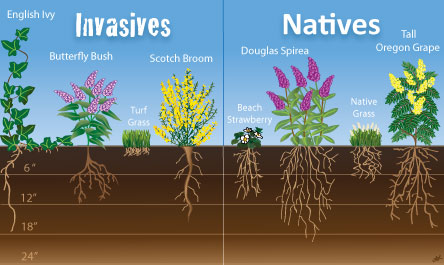
In addition to reducing carbon in the atmosphere (which, we know is what causes global warming), root systems also influence the diversity of worms and microorganisms in the soil. The more diversity of microbes in the soil, the more rich it is and the better plants will grow in it.
Native planting improves the ecology and biodiversity above ground, from bugs to birds to mammals, it increases the microbes in the soil, thus enriching it, and encourages carbon sequestration, which will reduce climate change.
All you have to do is add more plants to your garden, or make room for natives to arrive through natural seeding processes. Even if you’re not a homeowner, you can add more plants pollinators love to your front stoop and petition the place you live to add more natives to communal outdoor areas.
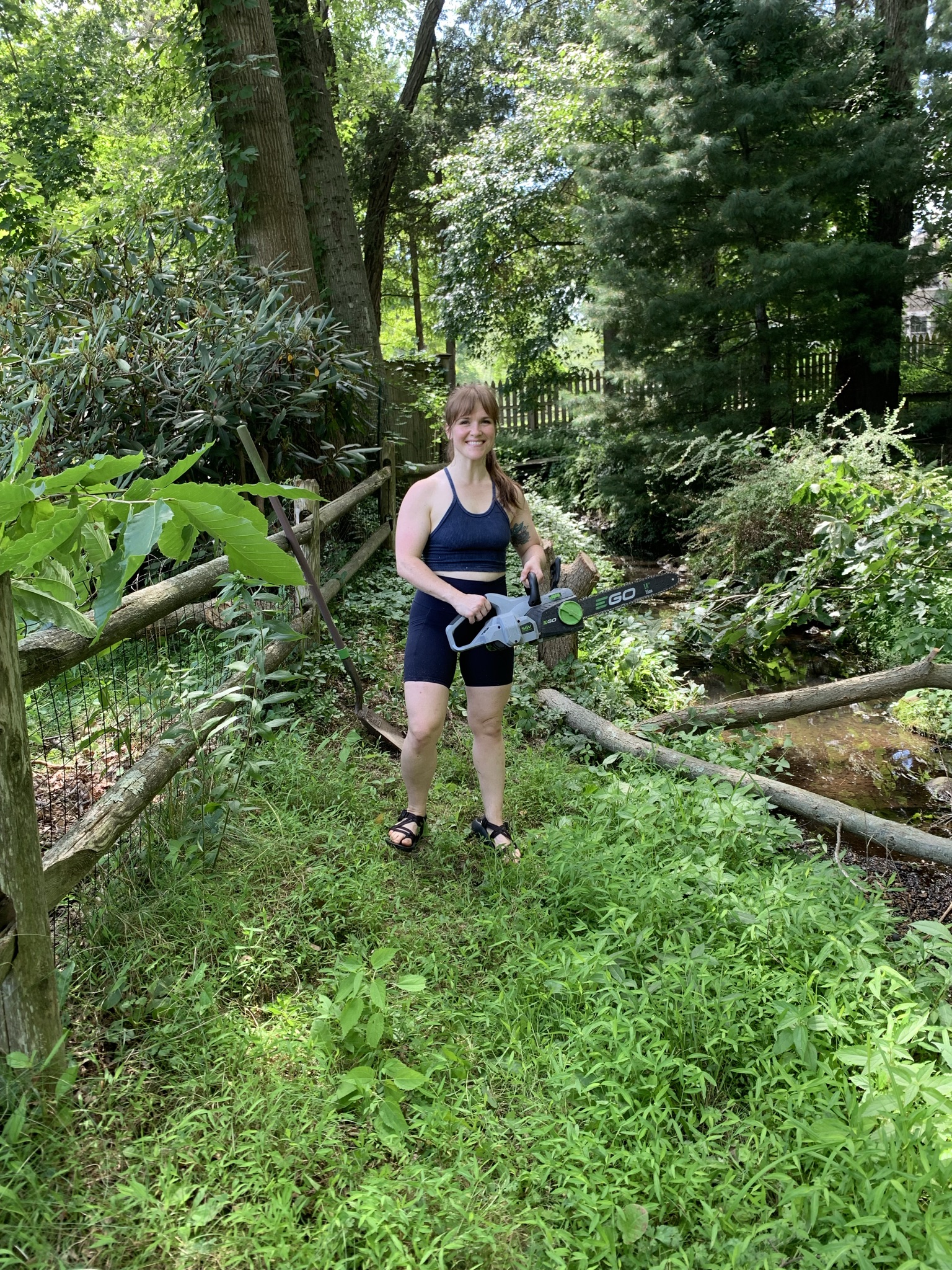
It’s not easy, but it’s simple. I look at this picture and see the invasive plants I’ve learned about and how I’m still surrounded by them. I’ll be chipping away at the invasives on my property, encouraging others to do the same, and next up will be reaching out to local government to rid our open spaces and medians of these ecology killers.
[…] Upon discovering the damage, I didn’t even feel upset. I just got home from a pre-sunrise gym sesh, was riding that fitness high, when I was shocked to see it the tremendous tree taking over our yard. As I shared my shock with my husband, he said, “There was a tree there?” and I went from shocked to baffled, then he said “Well, insurance will have to pay for it, no big deal.” So I received his same calm and began imagining all of the full-sun plants I’d be able to plant in my native garden. […]
[…] are just my design style. I mentioned in a recent post that I’ve become more passionate about native gardening, but as I expand my design efforts from indoor to outdoor, I haven’t found a lot of […]
[…] those lines. Nope! I suggested a bee, because he’s often admiring bees when I’m shopping for native plants…nope! Then it struck him: he wanted to be an orange […]
[…] my fellow suburbanites surely came a-flocking to the big box store to overdose their gardens with Eurasian ornamental plants. The kid-sized worker gloves didn’t make their […]
[…] consider myself an environmentalist. I plant native, run my local recycling gift economy, reduce, reuse, recycle, the whole lot of […]
[…] back to abundance—I’ve kept scraps for decades, hoarding craft materials under the guise of environmentalism. I see now how holding on to old, potential ideas can distract from my prioritized creative […]
[…] none of this is thrifted. But none is new, either! So I’m not too bad of an environmentalist. Dress is ModCloth and turtleneck crop is Urban […]
[…] plastic packaging is an environmental […]
[…] more stuff are generally reminders that I’ll have to be responsible for getting rid of said stuff ethically later. That’s tiresome AF, not gonna […]
[…] Nature’s Best Hope, I learned how removing leaf litter and suburbia-approved lawn practices are devastating to the ecology. Among the sources I read after that initial book, one wrote that regarding fall cleanup of leaf […]
[…] night before, I settled on a dragonfly. Dragonflies are ancient creatures and indicators of a healthy ecosystem. The symbolism is there for me, […]
[…] into men who are creative, think for themselves and have firmly established values. Perennial native plants that sprout year after year, blooms bigger and brighter as years past, the soil enriched, my plot of […]
[…] place to experience abundance is in my garden. I started gardening for mental health and to save the world a few years ago, and it brings me so much delight to see a diverse abundance of resplendent life […]
[…] may have noticed that the environment is important to me, be it my physical environment indoors or saving the planet through gardening. […]